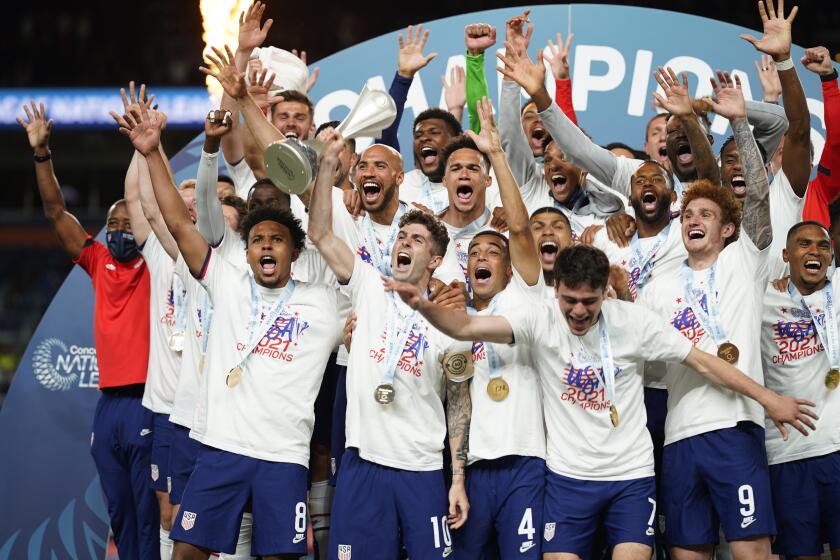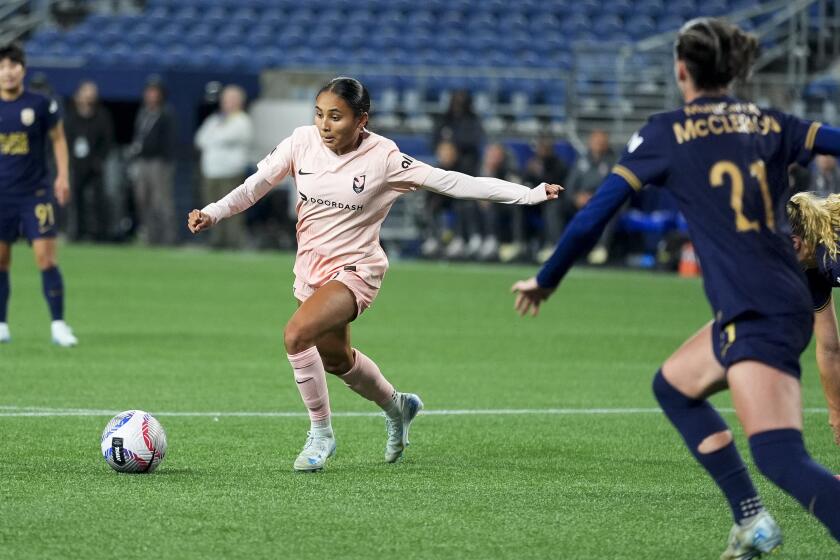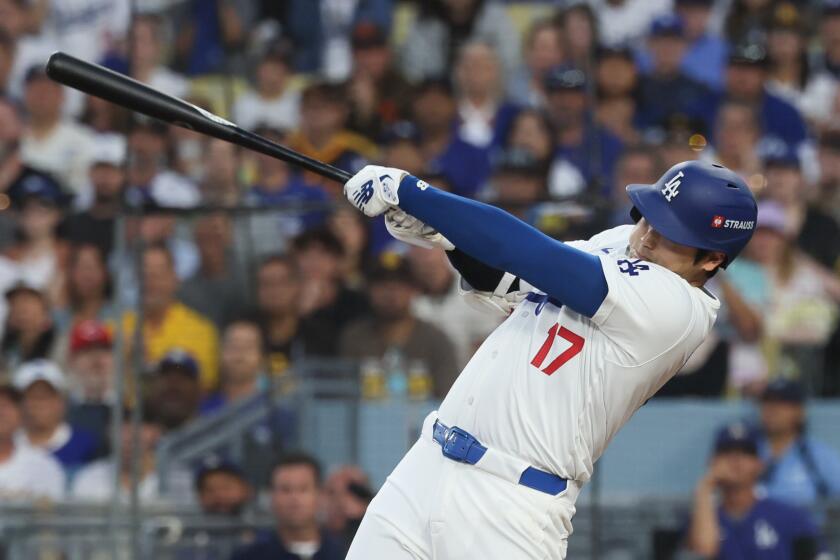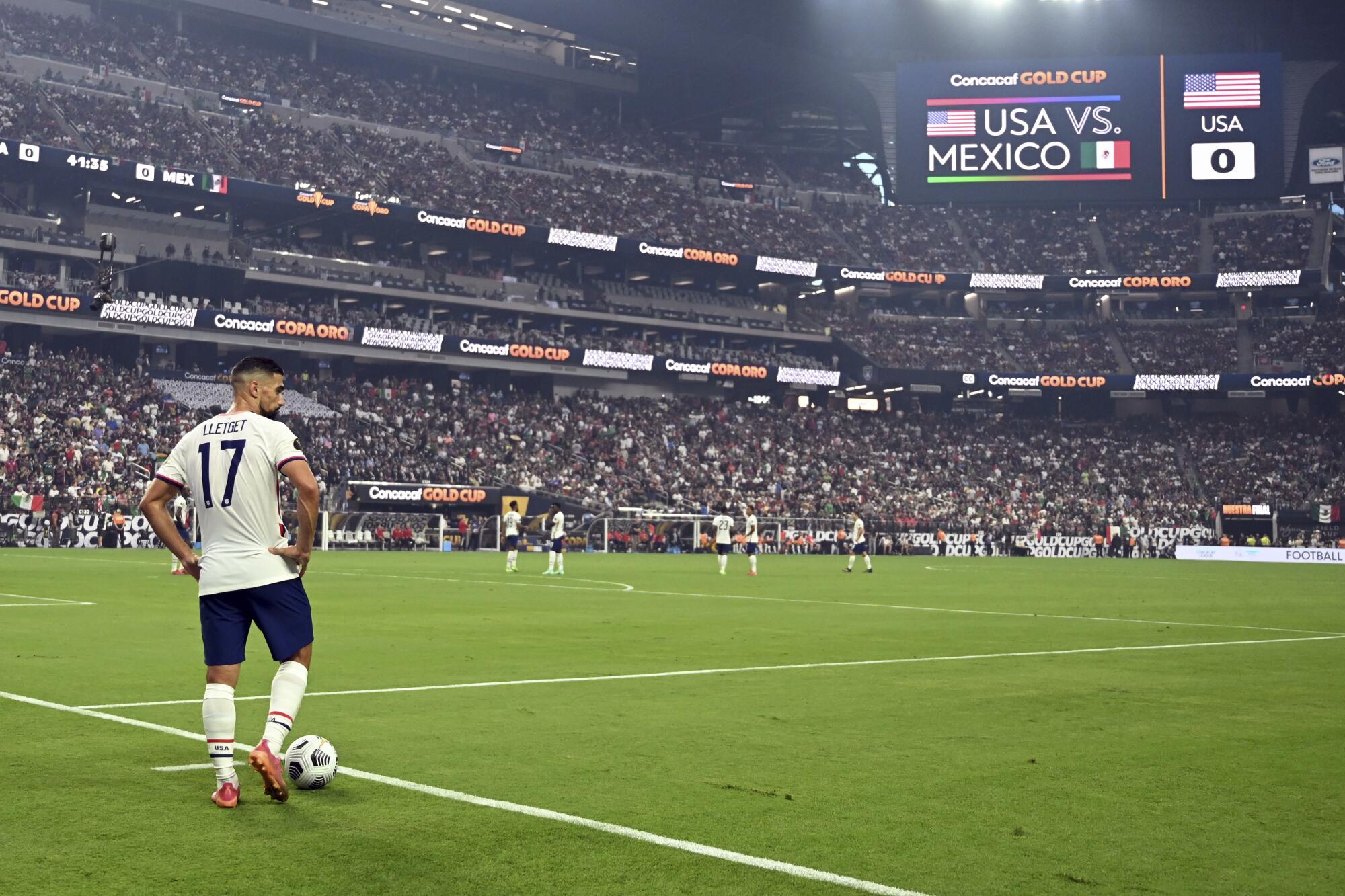
- Share via
CINCINNATI — Oswaldo Sánchez played 15 years for the Mexican national team, making 99 appearances in goal and participating in three World Cups. Yet two of the most challenging games he played during that time were the qualifiers he started in the U.S.
“The United States makes good use of its home sites,” he said in Spanish. “They normally take you to play in very cold places, places where it rains. Those conditions do not exist in Mexico.”
That will be the case again Friday when the U.S. hosts Mexico in a World Cup qualifier in Cincinnati, where the forecast calls for a wind chill of 39 degrees and a chance of rain at kickoff. And weather won’t be the extent of the home-field advantage. Mexico, which typically draws huge numbers of passionate supporters in the U.S., will be facing a hostile crowd as well.
“There will not be a lot of Mexicans,” Mexican midfielder Jonathan dos Santos said. “The stands are going to be full of Americans.”
Since 2011, Mexico has played 97 games in the U.S., nearly three times as many as it played in Mexico and almost as many as the U.S. national team has played here. Most of those matches were organized by CONCACAF or New York-based Soccer United Marketing and were played in hulking NFL stadiums before pro-Mexican crowds of up to 93,000.
The young U.S. men’s national soccer team showed poise under pressure to earn a Nations League victory over rival Mexico.
Compare that with Friday’s game, the sixth straight qualifier the U.S. has played with Mexico in the state of Ohio. Organized by U.S. Soccer, the game will be played in a 26,000-seat MLS stadium before fans who had priority to tickets as members of U.S. Soccer’s Insiders program or affiliated supporters’ groups.
“When we play against the USA in the Gold Cup or friendly games, we feel that we are at home,” said Dos Santos, the Galaxy captain who dressed for four of Mexico’s first six qualifiers this year but was not called up for Friday’s match. “It’s very different from playing the qualifiers.”
Mexico (4-0-2) goes into the game leading the U.S. (3-1-2) by three points atop the CONCACAF qualifying table, but the Americans can move in front halfway through the 14-game tournament if they win by two or more goals.
And the U.S. is a much different team at home. After beating Mexico twice in the U.S. last summer, in the Nations League final in Denver and the Gold Cup final in Las Vegas, the U.S. is 5-5-2 against Mexico on home soil since 2011. It has lost only one qualifier here since 1972.
In 27 games in Mexico, the U.S. has won only once — and never in a qualifier.
Same team, same players, vastly different results. In soccer, just as in real estate, it’s all about location, location, location.
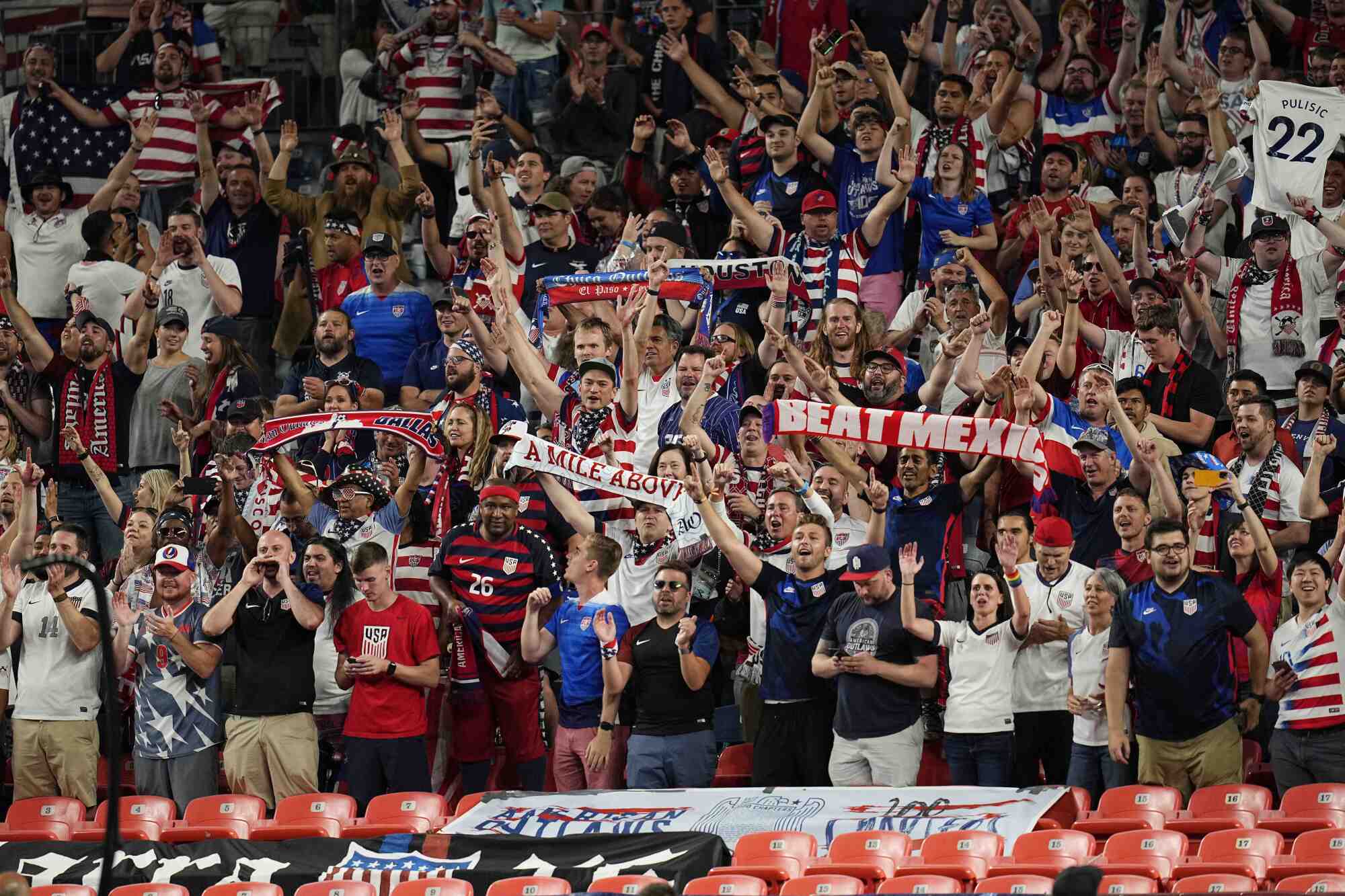
“In the United States, they take advantage of the conditions that only they have,” said Sánchez, a soccer analyst for TUDN who will be covering Friday’s game from a studio in Mexico City. “I have never seen the United States play a [qualifier] in Los Angeles, in Houston, in Chicago. Why?
“Because there are many Mexicans. Because the climate is more similar to that of Mexico.”
Another reason the U.S. is more competitive in home qualifiers is because its players are getting better, said Carlos Hermosillo, who played in two World Cups for Mexico and scored in a 1997 qualifier in Foxborough, Mass., that ended in a draw.
“The advantage is made by its players, young players with very good quality who almost all play in Europe,” Hermosillo, who is covering the qualifying tournament for Telemundo, said in Spanish. “The football they play, I like it a lot. Very physical but very technical. Players like [Christian] Pulisic, who know how to play the ball, complicate things for Mexico.”
Pulisic is likely to make only a cameo appearance off the bench — if he plays at all — Friday. Since injuring an ankle during a September qualifier in Honduras, Pulisic has played only 23 minutes for Chelsea, his club team. In his absence, teenager Ricardo Pepi, a dual national who chose to play for the U.S. over Mexico less than three months ago, has stepped up.
Friday’s game will be his first against his parents’ homeland on the senior level and he said it’s one he has long been looking forward to.

“It’s not just playing for the three points. This is a World Cup qualifier and obviously we’re at home,” he said. “In other games, it’s usually a majority of Mexican fans. It’s going to be important to have our fans’ support.”
Mexico, long the most popular soccer team in the U.S., will have some supporters too — but far fewer than usual. Zinuhe Tinoco, who has attended several Mexican games in the U.S., estimates there might be as few as 500 fans cheering El Tri on Friday, about 1/100th the number that attended August’s Gold Cup final in Las Vegas.
“The tickets are a lot more difficult to acquire. And more expensive,” said Tinoco, who paid more than $600 on the secondary market for his. “It’s definitely a nice hit in the wallet.”
Not going, however, was never an option.
“There’s a lot of emotions in those games,” he said. “It’s one of those things that you can say you went to that game, right?”
Rich Guel, who goes by coronel, his rank in Pancho Villa’s Army, the main Mexican fan group in the U.S., will also be in Cincinnati after spending $400 for his ticket, nearly double what he spent on the flight from Phoenix.
The price of admission isn’t the only obstacle for Mexican fans, though. U.S. Soccer’s management of the ticket sales means El Tri’s supporters will be spread throughout the stadium rather than grouped together, as they are for most games. That will significantly reduce their impact.
Beginning with the 2006 World Cup, the U.S. men’s soccer team is 18-3-1 in home qualifiers, thanks in large part to Amy Hopfinger’s work behind the scenes.
“The whole point is to be together. For all the other national team games, it’s not an issue.” said Guel, who has missed just a handful of Mexico’s games in the U.S. over the last eight years and has never been in the minority.
“We know [why] exactly,” he said of the importance of the home-field advantage. “We expected it.”
Added Tinoco: “What makes this game different is that all Mexico fans are forced to scatter around the sea of red, white and blue.”
That’s not by accident.
“When you’re talking about a World Cup qualifier, it’s really important to have a pro-U.S. crowd. And it’s not always easy to ensure that,” said U.S. coach Gregg Berhalter, who played for the U.S. in a 2-0 qualifying win over Mexico in 2005, 100 miles up I-71 in Columbus. “So for us it’s just about understanding what competition we’re in and trying to get a crowd that’s going to push us and get behind us and really help us to be successful.
“We want fans in the stands that are going to be pro-U.S. supporters. We want the stadium to be loud. We want the atmosphere to be hectic. Because we know how a good crowd can boost a team.”

